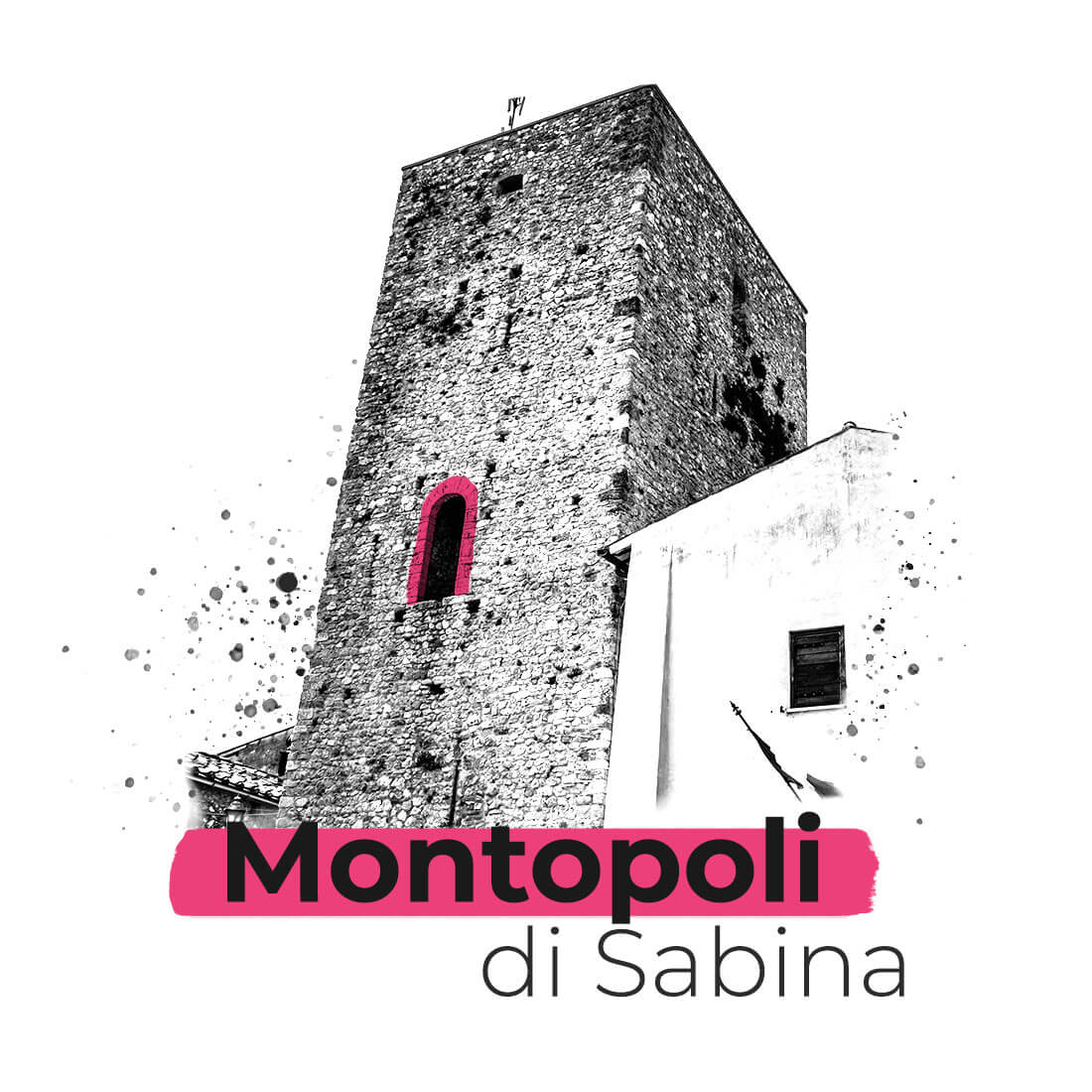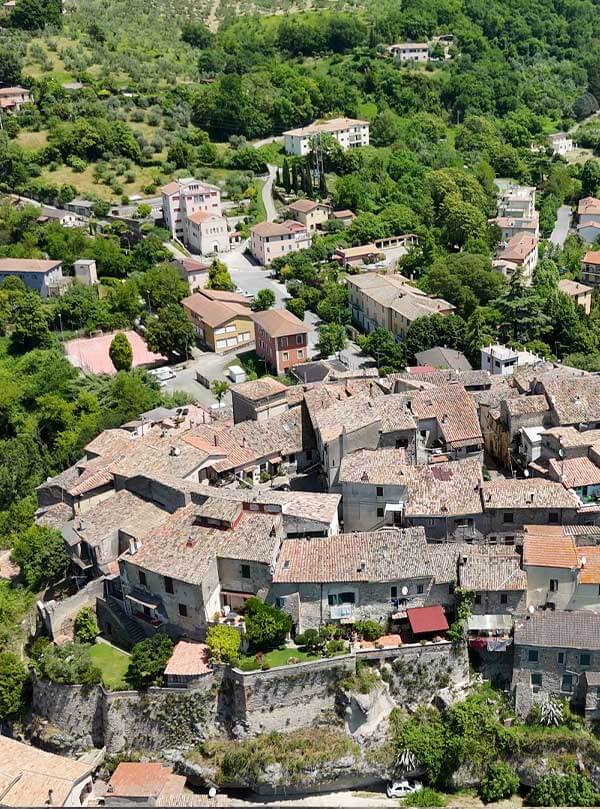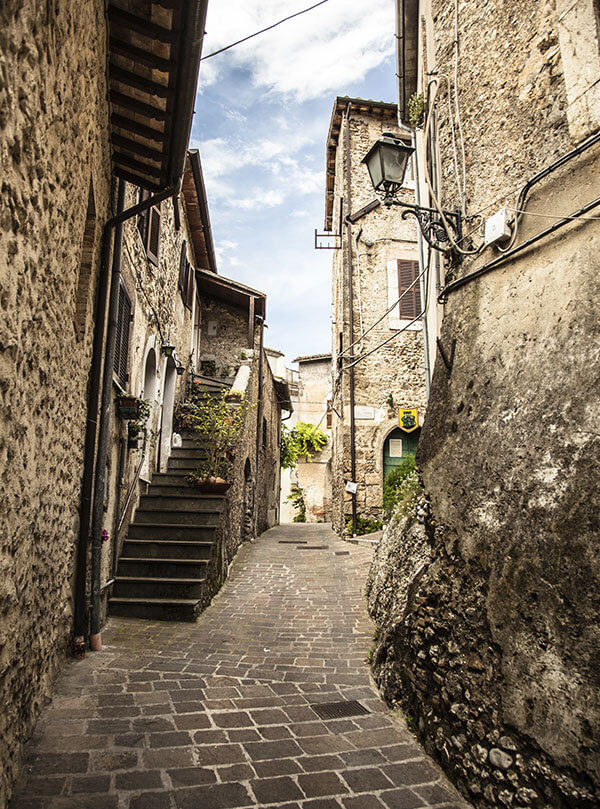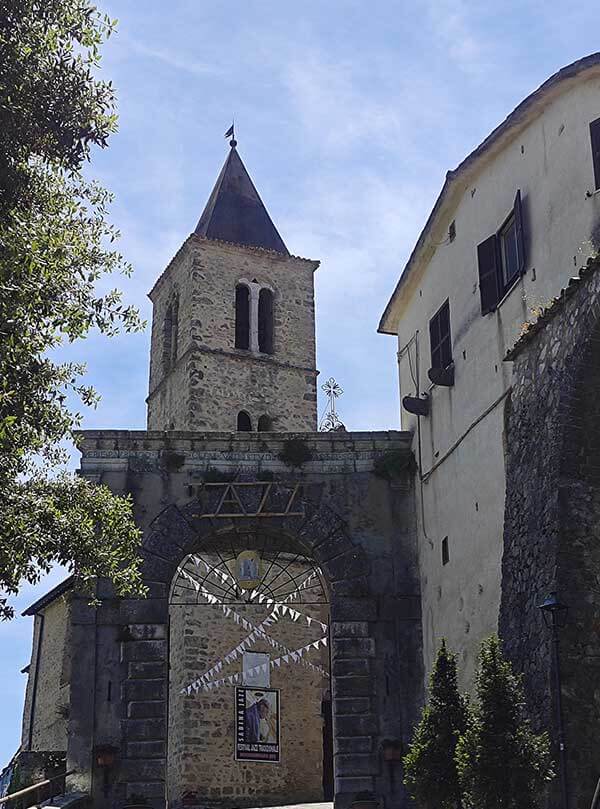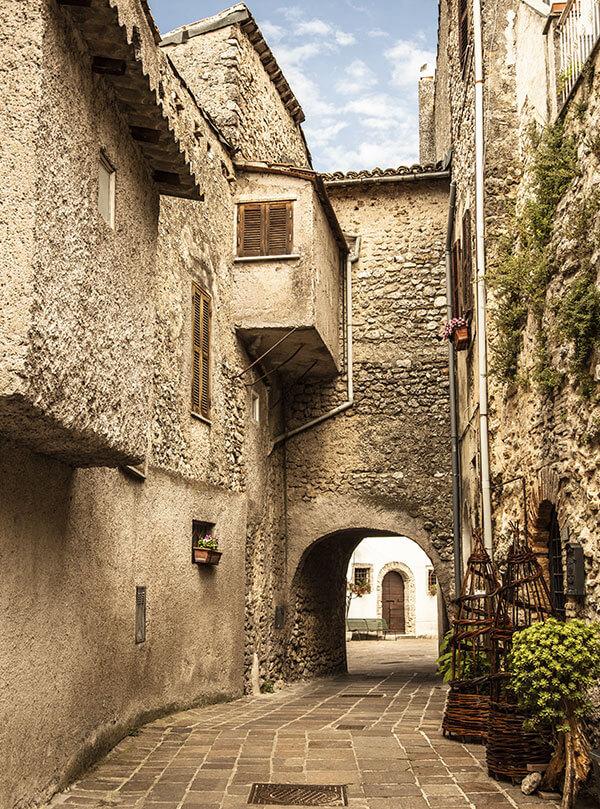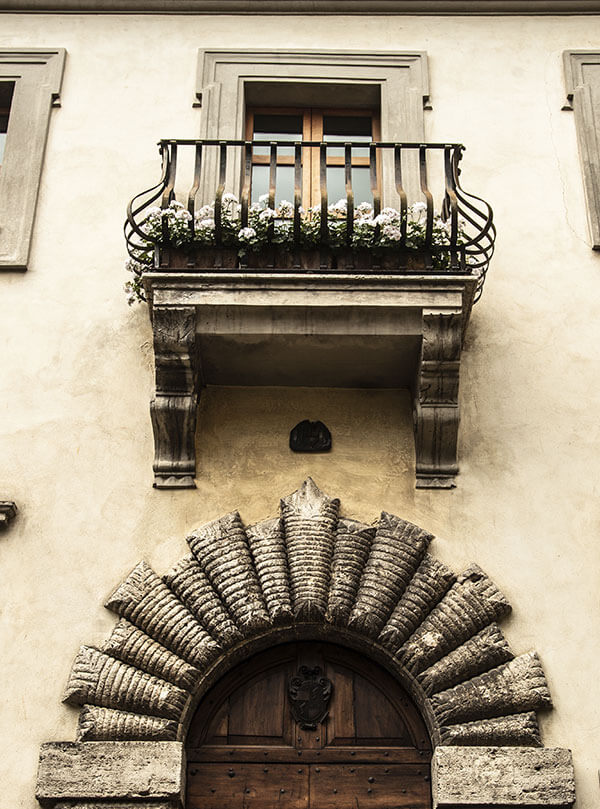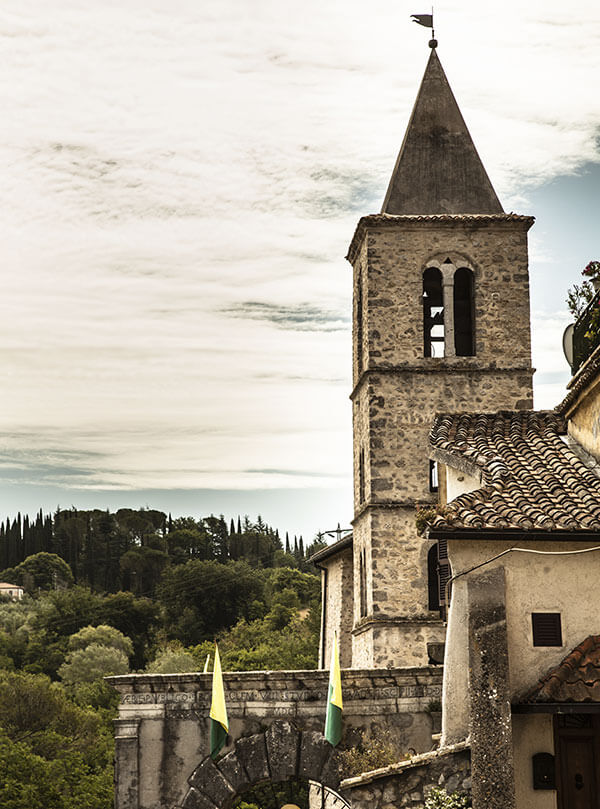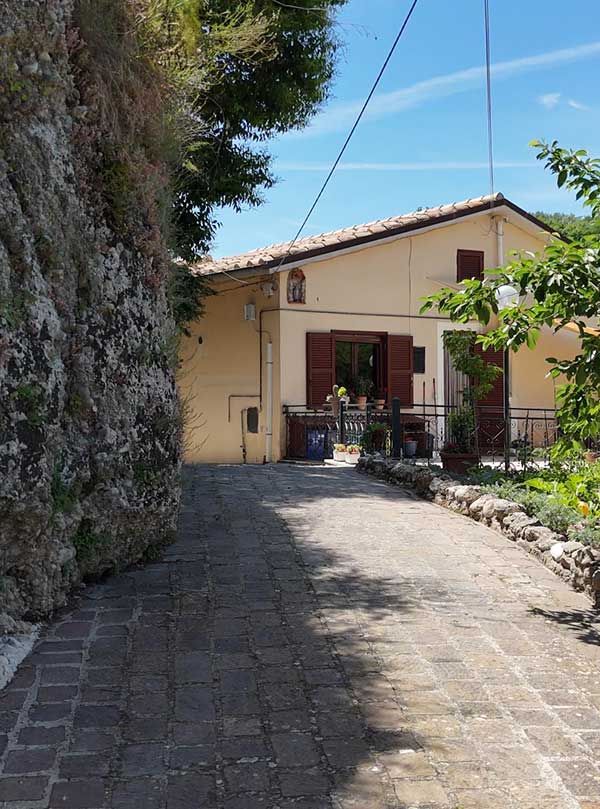Erected in a strategic location, perched on a cliff at the confluence of three rivers and guarded by three surrounding walls with only one entrance through a drawbridge, the ancient and proud Castrum Buccinianum.
Village of Bocchignano

Position
Bocchignano
02034 – Montopoli di Sabina (RI)

Opening hours
Always open

Contacts
Tel.
Mail:
Erected in a strategic location, perched on a cliff at the confluence of three rivers and guarded by three surrounding walls with only one entrance through a drawbridge, the ancient and proud Castrum Buccinianum, today Bocchignano, is one of the most ancient and noble castles of the Sabine Region.
The first to fortify the rocky outcrop where the castle stands were probably the Romans, and it is confirmed by both the gridded structure of the country and the Filetto (thread) incisions, typical game of Roman military during the guard duty.
Nowadays, the toponym origin is still uncertain: someone confirms it derives from the bugle, old trumpet of war consisting of a long curved tube of bronze, through which in the Roman camps were given military signals; someone asserts the existence of a temple of the goddess Sabina Vacuna, and to give strength to this hypothesis the fact that in some Instrumenti – public documents, drawn up by a notary in accordance with the usual formalities – the castle was called Vaconianum.
The first documents stating its existence date back to 939 (Cronichon and Farfense Summary of Gregorio da Catino), when Teodoranda and her husband, Count Ingebaldo, give two-thirds of the castle and its outbuildings to the nearby Farfa Abbey, delivering the keys to the abbot Campone making Bocchignano, previously frank and pagan, Lombard and Christian.
Since then, despite the disputes between some powerful aristocratic families such as the Crescenzi and the Sant’ Eustachio and an attempt in 1153 to organize themselves as a Free City, the castle always remained under the influence of Farfa’s dominion.
Enfeoffed of Poggio Mirteto in the early nineteenth century, in 1853 it became an independent municipality, but in 1880 – by decree of the President of Agostino Depretis Council – was finally designated fraction of Montopoli di Sabina.
CURIOSITA'
THE HISTORIC CENTER
For access to the beautiful castle of Bocchignano there is an ancient gate of seventeenth-century forms built by the Pope of that era, as the inscription “AERE . PUBLIC . SED . PP . CLEM . VIII . STUDY . IAC . GUAD . ET . SCIPII . MID . D. D. D . V.I. (Opera di pubblico beneficio, seated Pope Clement VIII,probably considered the first opera publica built in Bocchignano.Passing through the gate, immediately to the right one notices steep ladders that allowed sentries to climb the walkway above the arch of the gate.
Going up, on the via dell’archivio, we find the Church of St. John the Evangelist.
The parish church is literally surrounded by carvings of the symbol of the Triple Belt, a chain of walls present in the past. Passing behind the church, on the side opposite the one where the bell tower is located, we find a building directly connected to the ecclesiastical one.
Attached just to the side of the church We find the austere Palazzo del Capitano Guadagni that presents sober forms, in perfect Renaissance style, with a noble floor and a servants’ floor higher up.
According to tradition in the mid-1800s, attracted by the Guadagni family, St. Leonard of Porto Maurizio came to Bocchignano several times, who also performed miracles there. The little room in the Palazzo Guadagni that commemorates the saint’s presence – at Via dell’Archivio No. 3 – was later donated to the parish, which made it the headquarters of the Misericordia (now Caritas).





